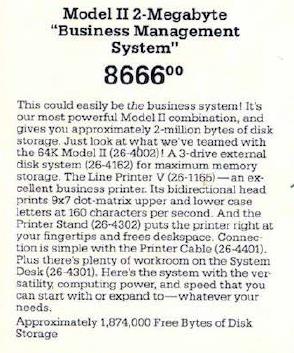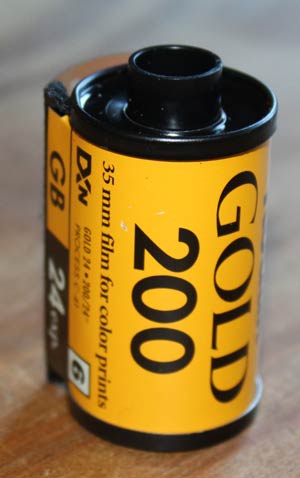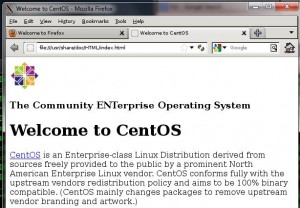My little sister send me the question who might be depicted by this emoticon…

and gave me the hint that putting ‘Heil’ in front of it would make it easier.

My little sister send me the question who might be depicted by this emoticon…

and gave me the hint that putting ‘Heil’ in front of it would make it easier.
This interesting piece from the BBC came across my desktop the other day…
and I feel compelled to comment.
One interesting science-historical fact is from the days before the discovery of atomic forces, before we ‘knew’ that the energy produced by the sun is based on nuclear fusion where two heavy hydrogen atoms are fused into one helium atom. The energy contained in the one helium is less than that of the two hydrogen and the energy difference makes our days bright and life possible on earth.
But it is not, that before the discovery of these processes, scientists just sat there and agreed to wait for the discovery of nuclear fusion – no – they used what they knew then to explain the sun. Lacking nuclear fusion to generate heat they turned to coal, which they knew well to generate heat. So they came up with the idea that the sun is a big ball of pure coal – and it burned. They already had a good idea how big the sun was so, commandeering all the scientific methods at their disposal, they calculated how long we could depend on the sun to give is light and life. I don’t recall what the number was they came up with, but it was considerably lower that the now estimated ten billion. It did not matter too much, as other branches of science also did not know too much about the time it took for the current state to develop to what they could observe. And the creation of the world in five days was still a well accepted possibility.
We might smile just how cute – and wrong – science was then. But I can not help imagine scientists in a century or two who unearth this BBC video and have a good laugh.
I wonder where the humility of science has been lost so that it can now tell us with utter conviction “How the Solar System Formed.”
Funny, if it’s explained like that, huh?
And we have an update with part 2
 One of my first ‘investments’ I made after college, when I started making a boat-load of money (that’s how it felt, at least) with my new job, was a TRS-80 computer from Radio Shack.
One of my first ‘investments’ I made after college, when I started making a boat-load of money (that’s how it felt, at least) with my new job, was a TRS-80 computer from Radio Shack.
Today I ran into an article on Mashable about that Trash-80 that brought back memories of sitting on that machine for long nights, the ash tray overflowing, discovering all the things you could do with BASIC.
Despite my feeling of being totally rich, my pay check of nearly 2000 Deutsch Marks would not allow me to buy anything but the entry model of this computer. At that time the US Dollar was around 4 Marks which brought the price of that computer to an amazing DM 3000 – one and a half month’s pay. This made me think about what that top model Tandy computer would cost in today’s Dollars – – – turns out to be over 26 thousand Dollars!
And looking at the exchange rate from the other side – I made only $1500 in today’s Dollars and I thought I was rich? Now I wonder if the exchange rate of DM to US$ really reflected the relationship of cost of living. A quick Google search reveals that in 1980 a bread in the US cost about 50 cents, while a bread in Germany cost DM 2.50 – so the exchange rate is at least in the ballpark.
Maybe I should have moved to the US right after college – I might have been able to afford one of those fancy floppy drives from Radio Shack…
In case the TRS-80 catalog on Mashable ever goes away, here’s a copy…
Somehow the film Water Time by Allan Weisbecker made it onto my hard disk and it was well worth watching albeit frustrating.
Frustrating because it confirmed my own experience with my fellow human’s acceptance of new facts that violate their ready-made conceptions – namely none, zero, nada, zilch.
But I never heard such honest statements as “No, I don’t change my mind – whatever the evidence might be!” What I personally get most of the time is rejection or attempts to question the validity of evidence or fact.
Over the last years it has become quite evident to me that the root of all evil is government. For the simple fact that they claim for themselves to be above and beyond any morality. We teach our kids that taking things away from other kids is stealing and we should not do that. Yet when the tax collector calls it tax and does the same thing – it somehow is something other than stealing – but it’s not!
This is such an obvious truth but try to explain this to somebody who has paid taxes for all of his life and could not admit that this is morally wrong – simply because he would have to admit that he was wrong for all of his life.
It appears that to admit being mistaken is very difficult for many and it is easier to insist to have been right all along.
 Many years ago that I read the Lensman series by Doc E. E. Smith, the precursor to all modern space opera that came after it. Even at the time I read it the technology was dated as these books were written in the 40s and 50s (and even I had no read them when they were first published), but that all did not matter to me at all. These were just great stories.
Many years ago that I read the Lensman series by Doc E. E. Smith, the precursor to all modern space opera that came after it. Even at the time I read it the technology was dated as these books were written in the 40s and 50s (and even I had no read them when they were first published), but that all did not matter to me at all. These were just great stories.
My first read was in a German translation and I am rather certain that I read at least a few of the books in English after I came to the US of A. For a long time now I wanted to read them again but these books are hard to come by – most of them were out of print and I believe still are – you can’t really find them on Amazon in form of inexpensive paperbacks, maybe as bound collectors items but not for an amount that I was willing to spend.
So I had given up for a while to find a complete set, but recently discovered the first, Triplanetary, as an ebook and am about to finish it on my tablet (apparently the only useful application for a tablet.)
As I was approaching the last few pages I needed the next one – First Lensman. Quite a bit of googling later I finally hit the mother-lode at Arthur’s Bookshelp. He had them all and as I was at it, I also got the Skylark series for the time when I’m done with the Lensmen. That could be a few years at the slow pace I am going.
Just in case you need the sequence of the book, because it is sometimes hard to figure it out the chronology:
And here – as we are at it, the sequence of the Skylark series:
I have mentioned the spaceship Orion previously in my post about Living Under Water. The German science fiction TV series Space Patrol (Raumpatrouille) follows the crew of the space ship Orion on their adventures through the galaxy.
 I remember waiting very excitedly for the première of the series and then every next week’s show. It came out at about the same time in 1966 as the original Star Trek, but it was much later that I finally watched my first Star Trek episode and it confirmed the German arrogance that we (the Germans) are better at creating things but it also confirmed the other stereotype that America is much better in marketing. Orion lasted seven episodes with a remastered movie version in the early 2000s, while Star Trek is still going strong after nearly half a century. Sets and special effects were so much more creative than the original Star Trek even though some people dared to make fun of some of the props, like the electric iron used to do some mysterious tuning task on the navigation console. In my mind then, those people just didn’t get it.
I remember waiting very excitedly for the première of the series and then every next week’s show. It came out at about the same time in 1966 as the original Star Trek, but it was much later that I finally watched my first Star Trek episode and it confirmed the German arrogance that we (the Germans) are better at creating things but it also confirmed the other stereotype that America is much better in marketing. Orion lasted seven episodes with a remastered movie version in the early 2000s, while Star Trek is still going strong after nearly half a century. Sets and special effects were so much more creative than the original Star Trek even though some people dared to make fun of some of the props, like the electric iron used to do some mysterious tuning task on the navigation console. In my mind then, those people just didn’t get it.
I do have the whole series on DVD and it is about time to watch it again, but today I enjoyed running into another fan of the series who took his admiration for the show a bit further than just buying the DVDs – he created stunning illustrations of the adventures of the star cruiser Orion.
I discovered Crossvalley Smith through a post on Facebook that featured one of his illustrations from the Perry Rhodan universe, another sweet memory of mine, a science fiction series published as weekly pulp novellas.
A scene from a landing of the Orion on a desert planet has for now replaced an anime illustration as my computer wall paper – go check out Crossvalley’s site, maybe you find something you enjoy.
 This is history as we made it!
This is history as we made it!
It was in the early days of the internet, a time when Google did not exist yet, when we used Alta Vista to find things on that interweb. When Netscape was strong and the driving force for new developments on this world wide web. When there were pages at Netscape where you could tell the world about new sites or pages – and the world came.
It was 1995!
This is when we started something that would later be called a blog. Sure, there was no PHP (at least on the web) and certainly no WordPress, so the blog entries had to be crafted by hand, usually in a simple text editor and the blogger had to know HTML. Not that there was much to be known – the leading edge of HTML tags were background images and music.
This was the year ‘My Hobby Kitchen’ was born. The plan was to publish one Thai recipe every few days, or how often we managed. If we had kept it up, by now we would have – at one recipe per day – close to one thousand recipes. That number shows that it was just not possible, as nobody knows 1000 recipes. We did – maybe – foresee that and invented the ‘guest blogger.’ But only one came on board, shortly before the project died.
The amazing part of the story is that these pages survived. After a multitude of ISPs, and moving between different domains, these pages are still there and they are finding a new home now on this (real) blog.
I kept the pages as they were, just made some adjustments to fit into the framework of this blog, removed any pointers to websites that don’t exist anymore, and anonymized it to protect the guilty. But I left all the tacky background music (at least it does not start automatically) and images intact so that all those young people can see how it all started. It was written from the perspective of my significant other who is Thai and knew what she was doing – yours truly was just the webmaster.
Without any further ado, here is
 I got myself some nice Canon T4i but I can’t figure out where to put that film in, of which I still have a few rolls and which I don’t want to let go to waste.
I got myself some nice Canon T4i but I can’t figure out where to put that film in, of which I still have a few rolls and which I don’t want to let go to waste.
I think I like Nikon better because on the old 6006, I still have, there was not problem with that – I just opened the back – and there is the space where the film fit in. I got the back of my new T4i open but there is still no place for that roll of film, only all that electronic stuff, chips and wires and such – hmmm.
But, jokes aside, I know there is no more film produces any more – at least not in form of a mass production – and that I would have a hard time to find a lab these days that could still develop film. This roll on the right is probably about 15 years old and expired so solidly that there would be hardly anything on it any more, even if there was a process to develop it with.
But I got to think about that when I ran into a video of photographer Steve McCurry, securing the last role of Kodachrome produced in 2009 and going on a world tour to shoot that last roll ever to leave the factory.
Reminded me of the beginning of my photography career back in Germany. Obviously, with the German arrogance, I did not use Kodachrome – the colors were just too American to satisfy a German eye – we used Agfachrome which displayed a softer gradient of colors and saturation. Back then I always shot slide film and I don’t really remember what my reason was to suddenly get into film for color prints when I got a much better camera – the Nikon 6006 – after coming to the US of A. It might have been because there was an affordable service to give me, with the prints, a scan of the images I could download from the lab’s web site. Another reason probably was, that I was not a purist any more and did break down and took memory photos – back in my early days that would never had happened – the shutter was pressed only when art came out.
This very selective pressing of the shutter was paramount for Steve McCurry when he shot the very last role of Kodachrome. Here is his report…
This documentary got me very interested in Mr. McCurry and I found this interview with him.
You can see the gallery of the 31 images from the last role of Kodachrome on Vanity Fair. (Seems to be behind a paywall now.)
PS: Reminded me that, during my early days of photography (with Agfachrome), I considered it a good outcome when I got one good shot from a role of film.
 Serious programming in the olden days mean to deal with Unix – the father of today’s ubiquitous Linux running bigger part of the internet.
Serious programming in the olden days mean to deal with Unix – the father of today’s ubiquitous Linux running bigger part of the internet.
The first bigger project I was involved in was still the good old DOS with Turbo Pascal – anybody remember that?
As soon as I could, and we had to build something less of a hack but more of a software-engineered application, I steered my client into Unix, first the X86 version of Xenix, which turned out to be too flaky, and then a nice hundred thousand dollar HP Workstation. As it was an application involving graphics, an important order of business was to get familiar with the principles and techniques of the X11 windowing system.
This was not a very long-lived project and with the advent of more powerful x86 hardware and a finally decent piece of software from Microsoft – Windows NT – the develoment was moved to that new platform. The fact that the port from X to NT was not terribly difficult was a nice testimonial for proper application of software engineering principles. Hacking mentality as promoted by something like Turbo Pascal would have required a complete rewrite.
System administration, I had become familiar with during that time, was helpful when I started to maintain a few linux web servers years later. I always considered X11 far superior to all the other graphical windows software but I really had never anything to do with it any more – until a point in time a few days ago.
First of all, I finally succeeded in getting Ubuntu running on an old laptop. A flaky DVD had never gotten me through an installation properly and the machine was so old that it could not boot from a memory stick. I ultimately succeeded when I found a utility I could burn on a CD and boot from that made my USB bootable. Now I could load Ubuntu from the USB stick.
So, there I finally was again with a computer with a proper graphical user interface. But that computer was tucked away somewhere with little physical access. It serve as a local testing machine for web development – did not really need that X Windows for that!
But it was sitting there, teasing me, so I finally got XMing – an X Server running on MS Windows – installed on my main computer where I sit all day and I could finally connect to that old laptop remotely with a graphical user interface. In my early days of X11 there was not too much concern about security – it was all on the local network – yes, a coax ethernet cable – and to have an application display on an xterminal you just had to set the DISPLAY environment variable to the IP address of any X-Server, like a xterminal, and authorize its use.
That is all different now. I learned that from a remote machine you start an ssh connection on my workstation (windows 7) to the remote host (old linux laptop) using putty. If the putty session had X Forwarding enabled then a secure tunnel for all the X traffic was created. This tunnel could even go through a router with NAT without a problem. Initially I had wondered why I saw the value of the DISPLAY variable set to strange things like localhost:10.0 – but I finally understood that this was how the ssh tunnel worked: the ssh server on the old laptop pretended to be a local X server on display number 10; then it transported all the X traffic it received securely to the machine I was sitting on and fed it into XMing. It all worked perfectly.
Two weeks later I received my first Raspberry Pi and that little wonder did behave the same way as the old laptop, a bit slower I have to admit, so the old laptop is still a bit more powerful than the miniature linux box sitting over there on my speaker. Both are full LAMP systems and are even accessible from the rest of the world through the magic of DynDNS and port forwarding.
But then my trouble began.
As I had all this so nicely and easily set up, it was suddenly not enough any more that I logged into my real web servers only with putty, SCP, and DirectAdmin. Nostalgia had me in its grip and I just had to get X running on them as well.
First of all there was no X-stuff installed on those servers as they were web servers in some remote data center. But a “yum install xterm” got this handled. Still no go – starting xterm from the ssh login gave me the error message that the display was either not there or could not be opened.
The next step, I found out, was to enable X11Forwarding for the sshd on the remote server – but still no go – the DISPLAY variable was still not set. Lots of Googling around but no solution – everything I tried made no difference.
But I learned about the -vvv parameter to ssh. It would give me insight into what was happening during the establishing of the ssh connection. Unfortunately, putty does not have it! But I found that it has a logging function and after turning this on and comparing the logs from connections to my local old laptop and the remote web server I finally saw the light:
xauth
After I had it yum-installed and run to generate a new .Xauthority file for a local X server my quest for the xterm running on that web server and displaying on my local machine behind a NAT router in my office had come to a successful conclusion.
Not that I will use that much – putty and SCP have done the job for me for years – but I now could, potentially, install firefox on that server and start browsing through that server located at a very different place on the planet.
Hmmm – why don’t I just try that: yum install firefox……………………….
finally, after installing a gazillion dependent packages, the installation is – complete!
Now: firefox& – wait – wait – wait…

But it is clear that I have to file this away under ‘education’ as it is so slow to make it more or less unusable.